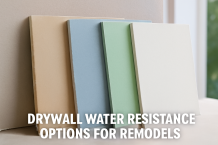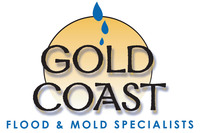
Mold has been an issue for much (if not all) of mankind’s existence, and the response to it has been relatively consistent: find it; identify it and remove both the mold and its growth source; moisture.
• In the Bible, the Book of Leviticus describes the proper handling of mold problems. Many of the same general principles are still used today by Gold Coast Flood.
• The Ergot epidemic that plagued Europe for 500 years has been attributed to mold-induced food poisoning.
• The Irish potato famine was caused by a mold that killed the potato plants.
• The strange behavior on the part of the Salem witches has even been attributed to mold.
• There is strong evidence to suggest that the “curses” that often befell those who discovered and explored the ancient pyramids were actually the dramatic consequences of mold exposure.
What Are Molds?
They are members of the Fungi Kingdom, a group with more than 1.5 million species. Unlike plants, fungi do not make their own food. Fungi get nourishment from other living organisms. Their main purpose in our ecosystem is to break down dead materials (fungi are the “bio” in biodegradable). Without fungi, the earth would be covered with dead leaves, trees, insects, and animals.
There are many molds that are beneficial to men, such as those involved in producing antibiotics, beer, cheese, and wine. Many others, however, have been found to cause significant health problems. Others still can be very damaging to building materials, capable of causing widespread structural problems.
Mold Growth
Almost any carbon-containing material (leaves, dirt, paint, wood, plastics, clothing, carpeting, drywall, etc.) will provide the necessary nutrients for molds to grow. Moisture is necessary for growth, and most molds thrive in higher humidity (55% or more). When an environment becomes dry, some simply become dormant while others spread by producing spores that float through the air in search of a new surface on which to land and begin growing. It can begin growing in as little as 24 to 48 hours in the proper environment.
Everyone is exposed to molds on a regular basis in the outdoor air. When they grow indoors, however, the concentration (and the impact they have on people) is greater.
They that are routinely encountered are not necessarily hazardous to healthy individuals, but two seemingly similar people may have drastically different physical responses to exposure. People with compromised immune systems, breathing difficulties, or allergies are more likely to suffer ill effects. The same is also true of infants and children, pregnant women, and the elderly. There are an estimated one hundred common indoor molds that can be harmful to humans.
Based on their health effects, they are broken down into three groups:
1. Allergenic molds are normally not dangerous but can cause allergic or asthmatic symptoms such as wheezing or a runny nose. They do not usually produce life-threatening health effects and are most likely to affect those who are already allergenic or asthmatic. 10% to 30% of all asthmatics are sensitive to fungi.
Allergenic molds can likely be cleaned or removed by people who are not personally sensitive by using a fungicidal spray or other cleaning techniques designed for eliminating growth while wearing appropriate respiratory protection and gloves. However, anyone who is particularly sensitive and has mold allergies should avoid working with or disturbing moldy materials which might cause a reaction or increase their sensitivity. Where large areas of mold are involved (e.g. in excess of 5-10 square feet), professional cleaning or mold remediation by Gold Coast Flood is likely to be needed.
2. Pathogenic molds can cause serious health effects in persons with suppressed immune systems or autoimmunity disorders, chemotherapy patients, or those suffering from HIV/AIDS. Opportunistic fungal pathogens (disease-causing organisms) such as Aspergillosis can generally be resisted by a normal, healthy individual (although high exposures can cause hypersensitivity pneumonitis).
If a pathogenic is found, you should seek the advice of a remediation specialist for specific recommendations on how best to resolve this issue, which may range from cleaning and fungicidal spraying to encapsulation and the removal of building materials. The average homeowner should NOT attempt the abatement of this type of mold. Please call Gold Coast Flood today for an evaluation of your mold problem by a skilled technician. He can test for mold to determine the best approach.
3. Toxic molds create toxins (called mycotoxins) that can cause serious health effects in almost anybody. These agents are fungal metabolites that can have toxic effects ranging from short-term irritation to immunosuppression and even cancer. Most of the diseases caused by mycotoxins result from the ingestion of contaminated food or liquid. However, Mycotoxins are found within some kinds of fungus spores, and these can enter the respiratory tract. Skin contact with Mycotoxins can also have significant health ramifications; toxins of several fungi can cause cases of severe dermatoses. Toxic molds are nearly all cytotoxic (substances produced by microorganisms that are toxic to individual cells), which disrupt various cellular structures such as membranes, and interrupt important processes, including protein, RNA, and DNA synthesis.
Toxicity
If toxicity is found, it is recommended that the area be sealed off from the rest of the home or business until it is remediated and it is confirmed through clearance testing that the toxic mold no longer exists in this area. If the area cannot be effectively sealed from the remainder of the home, the occupants of the Property should consider vacating the premises until clearance testing proves conclusively that the toxic mold is no longer present in the home. The average homeowner should NEVER attempt the abatement of these types of molds.
Where Mold Is Found
The conditions contributing to the growth (water leaks, moisture accumulation, high levels of humidity, etc.) should be addressed at the same time the growth is eliminated. If the moisture source is not repaired at the same time, new growth can begin in as little as 24-48 hours. This is a CRITICAL part of the remediation process. Please contact our office today if you need a referral to one of our trusted partners to assist in resolving the moisture source issue.
Serving San Diego and San Diego County for over 30 years with quality work and great water damage restoration service. We also service these cities – Chula Vista, El Cajon, La Mesa, Spring Valley, and Lakeside. Poway, Ramona, Alpine, Julian, Santee, Coronado, Imperial Beach, Pacific Beach, La Jolla, University City, Tierrasanta, Rancho Penasquitos, Rancho Bernardo, Rancho Santa Fe, Encinitas, Del Mar, Solana Beach, Leucadia, Sorrento Valley, Miramar, Mira Mesa, Scripps Ranch, Vista, Carlsbad, Oceanside, San Marcos, Lemon Grove, Bonita, Valley Center, Borrego Springs, Escondido, Fairbanks Ranch, Rancho San Diego 4S Ranch, Sabre Springs and Pine Valley.














Follow Us!